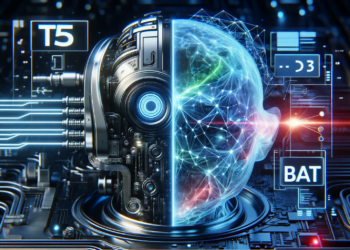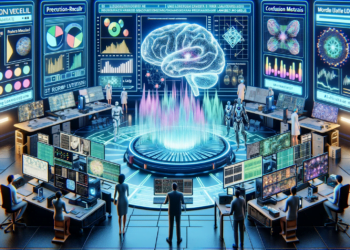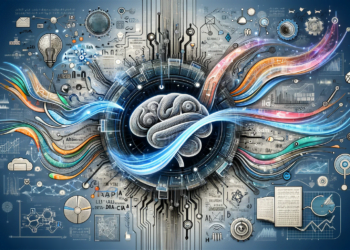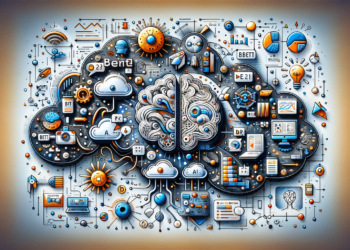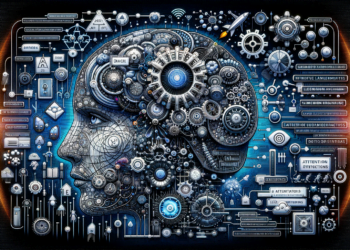The field of natural language processing (NLP) has undergone significant evolution in the last decade, primarily due to the integration of neural network-based models. Convolutional models, known for their effectiveness in image processing, are also emerging as a valuable tool in NLP. This article will focus on the exploration of convolutional neural networks (CNNs) applied to language models, revealing how technical advances are reshaping our interaction with language technology.
Introduction to the Convolutional Approach in Language Models
CNNs are a class of deep learning models specially designed to process data with a grid-like structure, such as images. However, their applicability extends beyond computer vision, finding a place in NLP. In the context of language, CNNs can model the hierarchy of linguistic structures and capture relevant patterns in sequences of words or characters.
Fundamentals of Convolutional Neural Networks
CNNs consist of a series of layers that transform the input (e.g., text) through convolution and pooling operations. In NLP, convolution involves applying filters to text to detect linguistic features, such as n-grams at various positions of the input. Pooling, on the other hand, serves to reduce dimensionality and highlight the most prominent features.
Applications of CNNs in NLP
Despite that attention models and transformers like BERT or GPT have recently dominated the NLP field, CNNs possess certain unique advantages, particularly in terms of computational efficiency and the capacity to capture local information. The CNN approach has been successfully applied in tasks such as text classification, sentiment analysis, and named entity recognition.
Text Classification
CNNs have proven effective in text classification, assigning predefined labels to text segments. This is possible because CNNs capture relevant sequential patterns without the need for a global semantic understanding, which can be sufficient to determine a text’s category.
Sentiment Analysis
Sentiment analysis is another area where CNNs provide promising results. By identifying phrases and extracting meaningful features that express emotions, CNNs can determine whether the underlying tone of a text is positive, negative, or neutral.
Named Entity Recognition
CNNs are also used for identifying and classifying entities in the text, such as names of people, organizations, and locations. The ability of CNNs to detect local patterns makes them a favorable choice for this task.
Recent Innovations and Challenges
Recent research has explored combining CNNs with other types of neural networks, such as Recurrent Neural Networks (RNNs) and Transformers, to reap the best of both worlds: the efficiency of CNNs and the contextual understanding of sequential models. Nevertheless, challenges remain, such as the need for large datasets for training and the difficulty in capturing long-term dependencies in the text.
Integration with Other Neural Architectures
The fusion of CNNs with RNNs or attention mechanisms overcomes the limitations inherent to each approach, providing better comprehension of the text’s structure and meaning. These hybrid architectures are opening up new possibilities in applications such as machine translation and text generation.
Current Challenges
Despite the progress, CNN-based models require significant amounts of labeled data for training, which is not always feasible. Moreover, CNNs alone can struggle to handle long-term dependencies in extensive texts.
Future Prospects
With improvements in hardware efficiency and algorithms, it’s anticipated that CNNs will play a more prominent role in real-time text analysis and in applications requiring rapid responses. Furthermore, research in language comprehension will benefit from the continued development of models that integrate CNNs more effectively.
Case Studies
Practical cases are presented where CNNs have achieved significant breakthroughs in NLP, demonstrating both their utility and the areas of opportunity that exist for their development and refinement.
Case 1: Efficient Web Content Classification
A relevant case study is the application of CNNs for the automatic classification of web content, where the rapid processing capacity of CNNs is critical due to the massive volume of data. Their application has enabled content moderation and the organization of information in real-time.
Case 2: Sentiment Analysis in Social Networks
Another illustrative example is the use of CNNs for analyzing sentiments on social networks, where efficiency and accuracy are essential for understanding public opinion trends. CNNs have shown effectiveness in detecting linguistic patterns that indicate different emotions.
Conclusion
Convolutional neural networks have emerged as a powerful tool in the realm of natural language processing, complementing and in some cases surpassing more traditional architectures. With their ability to process data efficiently and capture relevant linguistic features, CNNs will continue to pave the way for innovations in understanding and generating human language. Meanwhile, research and development will continue overcoming current challenges and expanding the capabilities of these models.
As NLP increasingly approaches a deep understanding of human language, the role of CNNs warrants prominent consideration in the future of the field. With their versatility and potential to evolve, these convolutional neural networks are not only reshaping the present of language technology but are also actively shaping its future.



